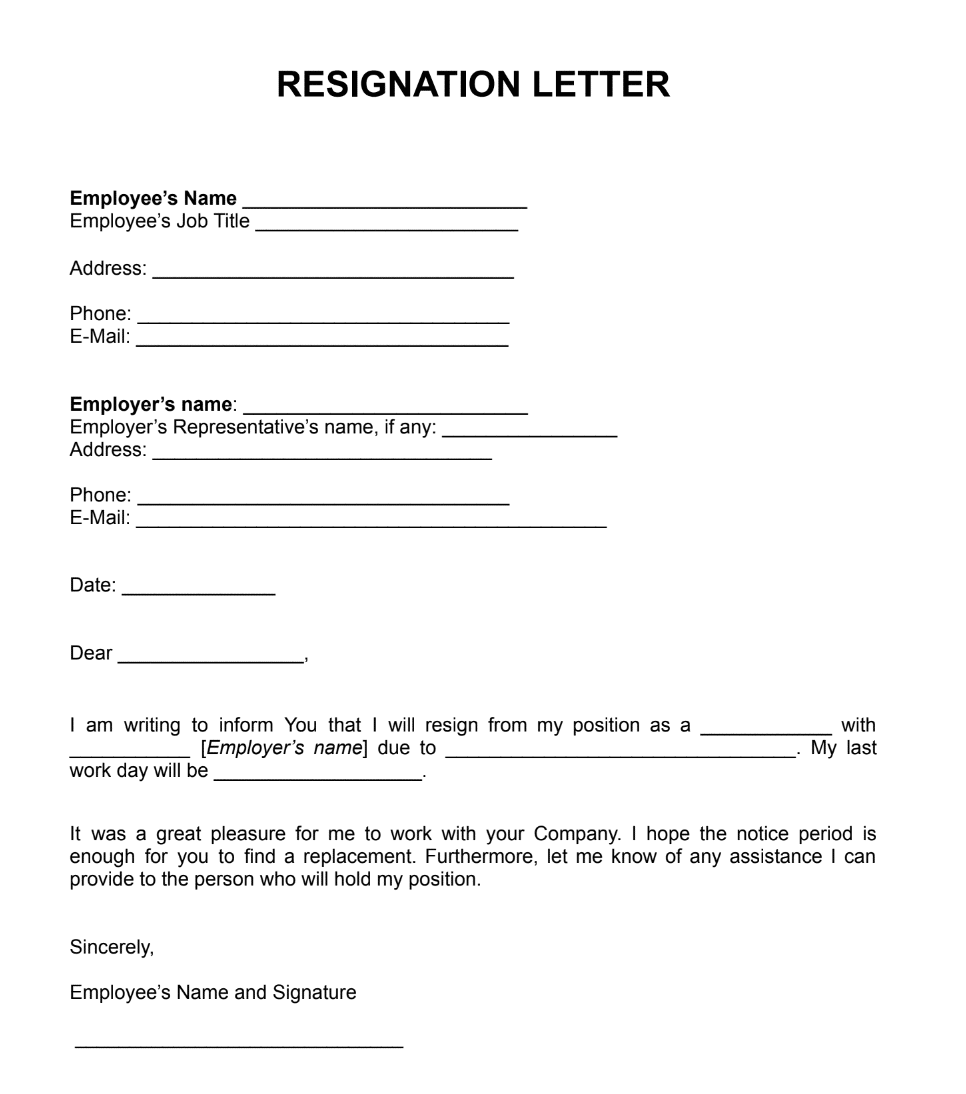 Preview
Preview

A resignation letter professionally communicates your decision to leave your current position. It denotes the end of your employment and opens the door to new prospects. Using a sample resignation letter gives you a good start – it sets the tone for your exit so that you will quit on good terms.
Feel free to utilize resignation letter templates available online to assist you in writing a concise and polite letter. It’s formatted to provide all the details you need while keeping a formal tone.
Employees must submit a professional resignation letter when they decide to leave their position. There are numerous reasons why someone can choose to quit:
There are two main parties involved in a professional letter of resignation:
An official letter of resignation often includes the following key terms:
Consider using a professional letter of resignation template that will provide a structured document with all the needed sections. All you have to do is add your information, which makes writing much easier.
Just follow these easy steps to create a proper resignation letter:
Professional resignation letter examples come in handy as they offer a framework that guarantees all relevant details are included. All you need to do is complete the template by adding your specific details.
A message of gratitude is optional in every sample resignation letter template, especially if your employment was not positive. In such cases, it’s critical to uphold a high level of professionalism and respect.
Resignation letters come in various forms designed for different situations. One such type is the formal or generic resignation letter, in which you simply outline the essential points without delving into personal feelings. Consider these points:
Check an example of a letter resignation you may use for reference:
Using a professional resignation letter template would be an effective way to step away from the job in an appropriate and polite manner. It helps a lot in creating a much smoother process of transition and ensuring a good long-term impression regarding your person in this particular company. Given that it will probably be the last professional communication with your soon-to-be ex-employer, a proper letter of resignation is definitely worth the time it takes to put it together properly.
 Preview
Preview
